OCADA
Office of the Chief of Air Defense Artillery

Air Defense Artillery (ADA)
Air Defense Artillery is a combat arms branch that defends geopolitical assets and provides maneuver forces with the freedom to move on the battlefield by deterring the enemy and destroying aerial threats, missile attacks, and surveillance platforms.
Life as an Air Defense Officer:
ADA officers personally plan, coordinate, and execute Air and Missile Defense (AMD) operations. They provide the technical and tactical expertise to lead Soldiers in any environment and can expect to personally employ their weapon systems to defeat the enemy.
Upon graduation from the ADA Basic Officer Leadership Course, ADA officers are immediately assigned as Platoon Leaders with responsibility for 15-30 Soldiers and up to $500 million in advanced equipment.
After 18-24 months building leadership experience at the platoon level, the ADA officer may serve as Battery Executive Officer or Tactical Director prior to attending the Captains Career Course.
Functional Training Schools
U.S. Army Air Assault School is a 10-day course designed to prepare Soldiers for insertion, evacuation, and pathfinder missions that call for the use of multipurpose transportation and assault helicopters. Air Assault training focuses on the mastery of rappelling techniques and sling load procedures, skills that involve intense concentration and a commitment to safety and preparation.
https://www.goarmy.com/soldier-life/being-a-soldier/ongoing-training/specialized-schools/air-assault.html
This three-week course, also known as Basic Airborne Course, teaches Soldiers the techniques involved in parachuting from airplanes and landing safely. The final test includes a non-assisted jump. The purpose of the BAC is to qualify the volunteer in the use of the parachute as a means of combat deployment and to develop leadership, self-confidence, and an aggressive spirit through mental and physical conditioning.
https://www.goarmy.com/soldier-life/being-a-soldier/ongoing-training/specialized-schools/airborne-school.html
Ranger School is one of the toughest training courses for which a Soldier can volunteer. Army Rangers are experts in leading Soldiers on difficult missions— and to do this they need rigorous training. For over two months, Ranger students train to exhaustion, pushing the limits of their minds and bodies.
The purpose of the U.S. Army's Ranger Course is to prepare these Army volunteers — both Officers and enlisted Soldiers — in combat arms related functional skills. The Rangers' primary mission is to engage in close combat and direct-fire battles.
https://www.goarmy.com/soldier-life/being-a-soldier/ongoing-training/specialized-schools/ranger-school.html
This is a career progression and Leader development course designed to provide Stryker Brigade Combat Team (SBCT) designated Leaders the aptitude to achieve the technical competencies of a Leader assigned to a Stryker formation. This is a three week resident course taught and uses hands-on performance oriented training and simulations as the primary teaching methods.
https://www.benning.army.mil/Infantry/199th/SLC/
The Patriot Top Gun Course is a six week long course, designed to develop expert skills and provide a comprehensive understanding of Air and Missile defense design planning processes, Joint Data Networks, Multi-Tactical Data Links, Patriot Radar theory and battle management within the context of the Joint, Interagency or Multinational operational environment. This course is extremely demanding and will challenge the students' competencies using a number of situations, hands on training, examinations, and practical exercises.
Air Defense Artillery Arsenal
Stinger
The lightweight, man-portable, fire-and-forget missile system incorporates an infrared seeker to destroy enemy aircraft and UAVs at close range.

Avenger
Avenger’s lethality and mobility protects maneuver forces and critical assets with a rapid fire missile system that acquires, tracks, and engages low-altitude threats. The Avenger is capable of shooting on the move to destroy aerial threats with Stinger missiles and an M3P .50-caliber machine gun.
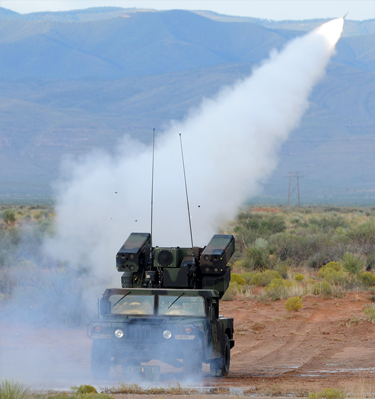
Maneuver Short Range Air Defense (MSHORAD)
Maneuver Short Range Air Defense is the next generation of ADA weaponry designed to provide divisions with organic Air Defense while maneuvering. Based on an armored Stryker platform, M-SHORAD features Stinger and Hellfire missiles, a 30-mm cannon, on-board radar, and IED defense.

C-RAM (Counter Rocket Artillery and Mortar)
Counter-Rocket, Artillery, and Mortar systems defend fixed-sites against enemy indirect fire using a 20-mm rapid-firing canon and a revolutionary approach to detecting, warning, and intercepting enemy attacks.
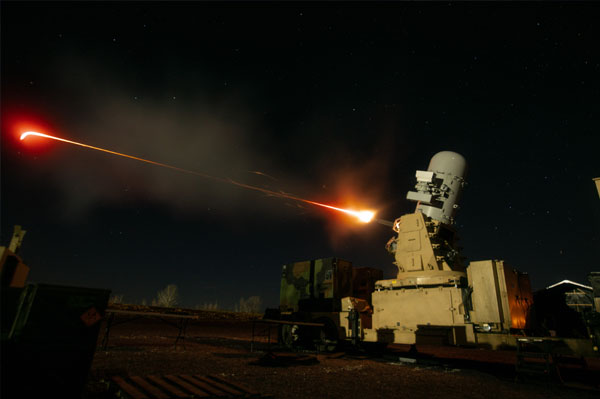
Iron Dome
Iron Dome is a combat-proven weapon system that intercepts indirect fires and destroys rockets, artillery, mortars, missiles, and UAVs. Iron Dome protects fixed and semi-fixed critical assets utilizing dozens of maneuvering interceptors, an advanced radar, and a battle management center.

Patriot Missile System
Patriot is a highly-mobile, combat-proven Air and Missile Defense system capable of defeating a wide range of threats including aircraft, helicopters, UAVs, ballistic and cruise missiles, and Weapons of Mass Destruction.
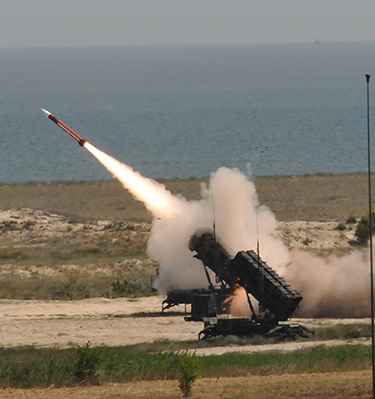
THAAD (Terminal High Altitude Area Defense)
The Terminal High-Altitude Area Defense system protects strategic critical assets by conducting long-range endo-and-exo-atmospheric engagements of ballistic missiles using the world’s largest air-transportable X-band radar.
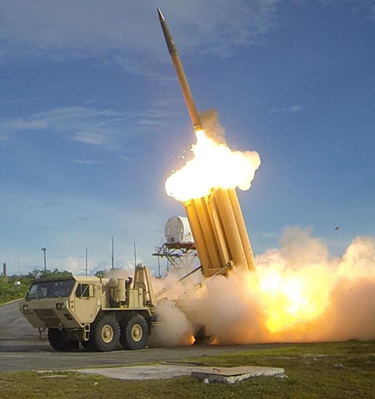
Ground Mid-course Defense (GMD)
Ground-based Midcourse Defense destroys intercontinental ballistic missiles threatening the United States.
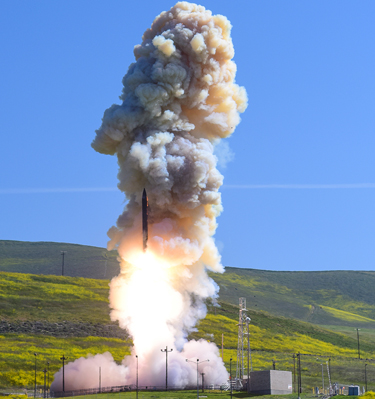
Frequently Asked Questions
There are National Guard ADA units in Florida, Colorado, Ohio, California, South Carolina, Alaska, Alabama, and North Dakota. All units, except those in Alaska and Colorado (which operate GMD) will deploy overseas in support of the worldwide ADA mission or protect the homeland from incoming aerial and missile attacks. The Army Reserve currently does not feature any combat arms branches.
Currently, 59% of Air Defenders are overseas, making the branch one of the Army’s best opportunities to operate throughout the world. In the past several years, ADA officers have deployed to Afghanistan, Iraq, Turkey, and Saudi Arabia. ADA units provide regular defense of U.S. forces and allies in Kuwait, Qatar, Bahrain, and United Arab Emirates. ADA officers are also stationed in Germany, Japan, Hawaii, South Korea, Guam, Italy, Spain, Belgium, and Taiwan.
Air Defense is one of the most sought after branches by the Department of Defense and international allies. With worldwide relevance, ADA Officers work with different Army branches, Air Force, Navy, Marines, and international partners. ADA operates on the front lines to engage aerial targets; with senior Pentagon officials to plan the nation’s military strategy; and at every level in between. Foreign allies request ADA protection in their countries, making ADA officers among the most demanded Soldiers in the world. The global importance of ADA has made the branch one of the Department of Defense’s top priorities and one of the fastest growing branches in the Army.
The global importance of ADA has made the branch one of the Department of Defense’s top priorities and one of the fastest growing branches in the Army. While ADA has been a combat arms branch for more than 50 years, the branch is currently experiencing unprecedented growth. As adversaries increase the size and lethality of their aerial arsenal (piloted vehicles, unmanned aerial systems ballistic missiles, rockets, artillery, and mortars), the Pentagon has increased ADA formations and capabilities to employ a large variety of state-of-the-art weapon systems that are needed across the battlefield. The growth is creating new stationing locations and career progression and promotion opportunities.
ADA officers have the opportunity to train Airborne, Air Assault, Ranger courses, and many other professional military schools. The most tactically-proficient officers will complete the ADA Top Gun course. There is also the opportunity to attain Master’s Degrees and fellowships as a mid-career officer.
No. ADA is a multi-disciplinary branch where leadership is the number one prerequisite. The weapon systems are technical and what we do is literally “rocket science,” but ADA officers, of all academic backgrounds will be trained on how to employ the weapons and destroy targets without needing any advanced understanding of math, science, or engineering.
ADA offers experiences that are valuable across many disciplines and can build a professional portfolio that sets ADA officers apart from peers in any field. ADA places officers in leadership positions early in their career and develops the skills to successfully lead large organization. Maintaining accountability for millions of dollars of government property also gives future employers and business leaders a clear understanding that ADA officers have a strong sense of responsibility, organizational and management skills. ADA’s strategic relevance operating across the globe enables officers to show future employers their ability to adapt to any situation and work cohesively with teams with very different backgrounds; whether those are economic or cultural. With a highly-technical background in ADA systems and tactics, officers are also attractive to the nation’s top defense contractors, engineering firms, developers, and industry leaders with lucrative offers because of the technical experiences they gain as an ADA officer.
